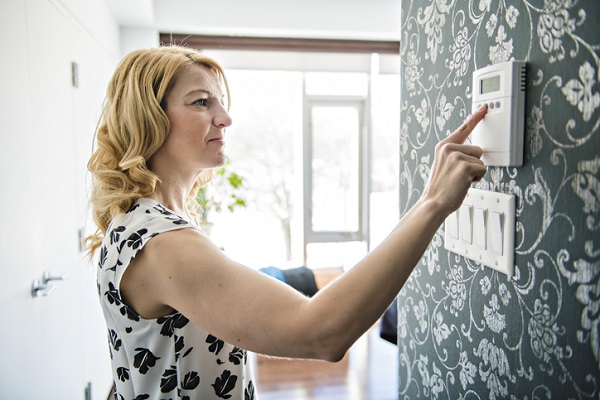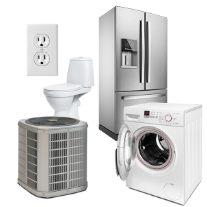Whether you just want to save money or help save the planet, reducing your home energy use this wintertime can help you get there. Utilities can be one of your biggest monthly expenses after mortgage payments and living expenses. Heating up your home in the cold winter months can be wasteful if you don’t take the right steps to conserve energy and prevent heat drain. Here are some simple ideas you can use to help you pursue your energy saving efforts.
Plug window, wall, and door leaks and drafts
Houses lose the most heat from leaks, cracks, and drafts along windows, walls, and doors. Check along these areas to find leaks and drafts.
- For window leaks and drafts: Reseal cracks and gaps with caulk. This can be one of the most effective energy saving actions you can take, and it’s easy too! In addition, consider heavy drapes in the winter, which can reduce heat loss by up to 10%. You may also want to consider insulation film, which can both insulate your windows and help you find cracks and gaps.
- Wall leaks and drafts: These problems can be a bit more challenging to solve and may require a professional. But if you notice cold air coming from outlets and switches on a wall, try using foam outlet and switch inserts to protect against those drafts.
- Door leaks and drafts: Make sure you switch out summer screen doors with a winter glass door. Consider purchasing draft stoppers that slide under the bottom of your door.
Change furnace filters and watch for vent duct blockages
You likely know that you should change your furnace filters every 1–3 months. In the winter, you may need to change them more often. Because you’re likely to be indoors more often, your furnace will work harder and need to filter more debris. That means dirtier, less efficient filters, especially if you have pets. Changing your filters can a great energy saving action to take.
Another commonly overlooked way to save energy is to check your vents for blockages. Piles of clothes and furniture can mistakenly cover vents, which forces your furnace to work overtime. Plus, if you have pets, you’ve likely seen them lie on top of a toasty vent. Keep an eye on your vents and make sure nothing’s blocking them.
Adjust your temperatures when you’re out or asleep
When you leave the house or go to sleep, you don’t need to keep the same heat settings as when you’re awake. In fact, you can safely lower your temperature by 10–15 degrees and save energy in the process. According to Energy.gov, you can save up to 10% a year on heating and billing costs lowering the temperature while you’re out or asleep.
You can go the extra mile and install a programmable thermostat, too. According to Angie’s List, it’ll cost you between $20 and $150 to install a programmable thermostat. These thermostats make it less likely for you to forget to reset you heat settings.
If you have a ceiling fan, set it to rotate clockwise
When your ceiling fan rotates clockwise, it pushes warm air down toward you. Recycling warm air is more efficient than pumping hot air through the furnace. While a ceiling fan won’t create warm air, it is a small energy saving action to take to keep your house a little warmer in the winter.
For additional energy savings, don’t forget about the 2-10 HBW Appliance Discount
Homeowners who have a home warranty through 2-10 Home Buyers Warranty (2-10 HBW) get access to a great perk. Through our Appliance Discount Program, you can save up to 60% on select GE and Whirlpool appliances! To access this program, simply log in to your Homeowner Portal account at www.2-10.com/homeowner.
2-10 HBW offers the most comprehensive home warranty coverage for homeowners. Let us help you protect your home.
Related content
5 Must-Have Options for Home Warranty Coverage








